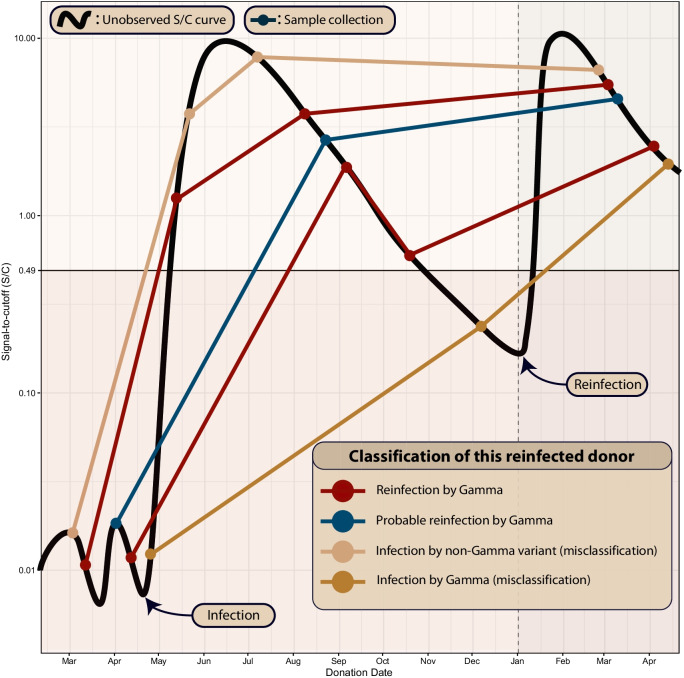Fig. 1.
Illustration of an idealized signal-to-cutoff (S/C) curve of a reinfected individual that is assigned to different groups depending on the sequence of dates of sample collection. The black curve represents the unobserved trajectory of S/C over time, and circles represent sample collections. This figure shows five sets of serial samples that were collected in different dates. The patterns that can be confidently attributed to reinfection are shown in red: sampled points that reveal the underlying V-shaped curve, or three consecutive rising values that can only be obtained by sampling the underlying V-shaped curve. If the dates of sample collection are too sparse, this reinfection individual may be misclassified as “Infection by non-Gamma variant” or “Infection by Gamma”

